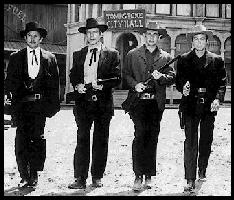Here are a few surprising things about life in the academy. Grading is nearly a fulltime job, distraction is the steady state of things, and knowing whether your students have learned anything is a lot easier than proving it.
On the first point, there’s never enough time during the work week to do a good job of grading and critiquing student work. Now I know why elementary-school teachers spend good chunks of their weekends cozying up to student papers.
It’s a matter of adjusting your calendar. I’ve taken to giving my kids deadlines at 5 p.m. on Fridays. That way I figure I may get their work back to them in timely fashion. I’m not whining about this (though it taxes my wife’s patience). But few folks outside the academy understand this. All they see are summers off and a few lectures a week. Would that it were only so!
Grading, by the way, may be the most challenging part of the job. In journalism instruction this amounts to editing a lot of stories every week. That means finding holes, looking for the great quotes, checking for the sound structure, the seductive lede, solid nut graf, good kicker, etc., even as you suggest — but avoid dictating — rewrites. By comparison, my editing buds at Bloomberg Businessweek work intensely on two or three pieces a week – including takeouts – which now sounds like a day at the beach.
Many of the papers, moreover, are the work of, um, loving little hands that have a long way to go. They’re novices and that’s why they’re in school. Our job is to be tough but encouraging, which is a challenging balancing act. I had to give a 22 to a piece the other day and offer a detailed criticism to explain the poor grade. But will that student come back with something better or shrug it off as a blown assignment? So far, on her first rewrite, she’s done mostly the latter. That led to me kicking the piece back to her and suggesting she take a closer look at all those margin notes I made. We’ll see how it turns out soon.
Taking a hard line with students isn’t easy. Some of my colleagues make Marine drill sergeants look like pushovers. One started a basic reporting class this semester with a full classroom of students and is down to nine. The kids who couldn’t handle the tough grading washed out; they must hope they’ll take the class again with someone they expect will go easier or they’re just leaving journalism. Another colleague who has taught for a couple decades can count those he failed on one hand with several fingers to spare. The Gentleman’s C was a saving grace for many, I suspect.
I figure there’s got to be a middle-ground, a golden mean. Sure, most of our kids aren’t ready yet to handle the growling city editors and magazine section editors I ran across. And some never will be. But I figure part of my job is to make them ready for that. And I don’t have to be an SOB to get them ready for SOBs. I just have to point out the flaws in their work and grade them accordingly, showing them how to make fixes. They’ll learn whether journalism is for them even without a high washout rate, I figure.
Indeed, some of the work that the kids do can make your day. I live for those moments when a piece comes in that almost ready for prime time. One fellow this week did a story comparing drinking-related crime in Lincoln with other places, quoting the local police chief and making it all timely by talking about a recent expansion of the drinking day to 2 a.m., an hour more than before. Good stats, disturbing records of car accidents with booze involved. The piece is solid.
Other students have done pieces that surprise and delight. One looked into a Northwestern University study that showed that religious people tend toward obesity. She looked at local churches and how they’re trying to foster fitness among their members. Another student looked at a new gender gap, the imbalance between women and men in high school graduation rates and college attendance (57% girls on campus nationally and in Nebraska). Such intriguing efforts can make grading far more palatable, even on weekends.
Part of the reason there are not enough hours in the work week for the grade book is that every day is a laundry list of distractions. Some days, this is great. It reminds me of John Lennon’s line from “Beautiful Boy” that life is what happens to you while you’re busy making other plans. There are, for instance, the kids who walk in to talk about their schoolwork (a pause that refreshes because it’s fun to help them iron out assignments and ideas). Our policy at Nebraska’s J School is no set office hours, but an open door whenever we’re not in class. That can mean many surprise visits.
Then there’s email, that modern scourge. The damn computer delivers something else to deal with every few minutes, it seems. And each note requires a prompt response, of course. I do respond quickly to the dean’s notes, I must say. My wife and kids, too, get priority. For others, it’s a challenge.
It reminds me of a high school history teacher who taught us time-management long before Day-Timers made a bundle on the concept. Make a to-do list early in the week, update it often and hope you’ll have checks next to most items by week’s end. Works pretty well, though mine seems to expand every day. I have found that I can’t abide unchecked items, which means a good many-mile run each morning to work off the self-imposed pressure. I hope my kids do something similar and figure the ones who meet deadlines must be doing so.
Finally, there’s another area of academics that is a real challenge. It’s the proof of success. “Assessment,” a term of little endearment, isn’t easy.
Let me spell that out. Take my biz-econ journalism students, for instance. I know they are learning something. They knew nothing about publicly traded companies, earnings, Form 10Ks and 10Qs, etc. They couldn’t write about a company’s quarterly results before spending a couple weeks on the topic (indeed, developing a grasp of income statements, balance sheets, stock market performances, etc.) Hell, they didn’t know the difference between Nasdaq and the NYSE, or the many different animals in the stock and commodities exchange worlds, before we dealt with all that. It’s clear they’ve learned something.
But how much did they learn? What will they take away? How can I prove to outsiders, especially tenure-review committee members, that the kids have moved from Point A to Point B? Even defining those points, as well as measuring the gap between them, is a challenge. Lots of documents. Lots of rubrics and graphs.
Fortunately, at Nebraska some of us have help. A group of us – mostly tenure-track newbies – are working on a peer-teaching experience this semester that is aimed at getting at such answers. We met on Saturday this weekend (no time during the work week for such things) to draft a preliminary version of a statement aimed at measuring our progress.
I picked three students – one star, one middler and one challenged student. I monitor their progress via reporting and writing assignments and tests. Will it become clear that these kids have grown between January and May? Don’t know. Certainly, they’ve learned something, but quantifying and demonstrating their achievement isn’t as simple as recording how they’ve done on an end-of-term test – it doesn’t work that way in journalism or other writing fields.
For folks in the teaching game for most of their careers, a lot of this is workaday stuff. It’s routine. For me, it’s all new. I’d like to think I’m doing A work. But between the grading challenges, the many distractions and the challenge of measuring it all, it’s damn hard to prove that. There are many days when it makes running a national correspondent system for a magazine look easy.



















